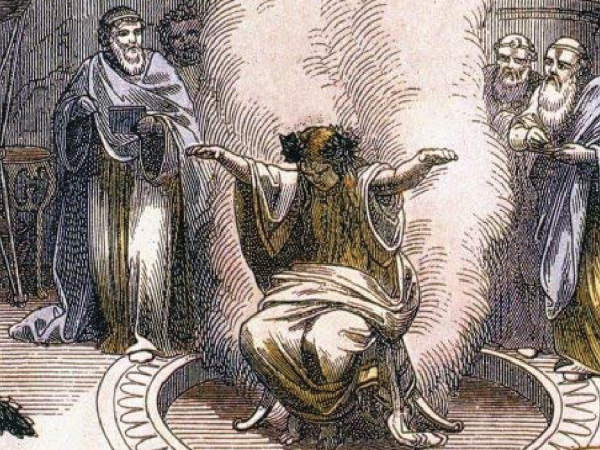This article is written to resolve the myth of marketing’s dependence on creativity and to assist young marketers to fast-track planning process. For others, it might be a good reference if one wants to know how marketing works in a consulting agency. It revolves around one simple question: Is there common formula for all marketing plan? My answer is not a clear Yes or No, but a rather Yes-But solution. Right or wrong, it might worth your reading because
- Yes: There is a similar formula for all marketing which is strategy part. I have been in marketing for 8 years, done hundreds of plans across branding, marketing to communication and digital platforms. There are patterns for all work which act like backbones for all other elements to follow. One may argue that marketing requires creativity to break the boundary and any model or framework will restrict the potential of creativity. I cannot agree more, but in order to take off creativity needs a solid foundation to jumpstart. The work of good strategy is to provide this foundation.
- But: The formula is very difficult to fully comprehend, especially in one article. Strategy until now has been a universally misused terminology. In order to frame it with a subject as broad as marketing, it requires a certain level of marketing proficiency and experience.
Still, I believe if we can scale down the subject, the pattern of good strategy is visible. This fact led me to researching more on the subject of strategy for both business and marketing down to communications. My research includes information from reputational authors and materials available to me as a member via Chartered Institute of Marketing (CIM). The findings are some key principles for strategic work and a communication planning model which I currently use in my company Wisdom Agency, Vietnam to train new employees and plan for clients.
Principle #1: strategy comprises of three steps
- Strategic thinking: performed over meetings, lobbies, or even meals. Strategic thinking is the initial way to get inputs for further development. Organisations that do not generate enough strategic thinking and inputs are likely to be stuck in the same route for years and ultimately fail in the end.
- Strategic planning: the main focus of this article which I will explain later. My opinion is that strategic planning is accounted for 20% of the strategic success. The rest 80% lies on strategic management
- Strategic management: the final and most important part. In fact, having poor planning but good implementation is still better than the vice versa. To me, the key to strategic management’s success lies on the science of continuous monitoring, analytics and projection for next steps rather than sticking to the same route laid down by the previous strategic planning steps.
Principle #2: good strategy has three attributes (Rumelt, 2011)
- Thorough diagnosis: the more time one spends on research and analysing the problem, the more likely the campaign or project will succeed. The plan may or may not be the same after implementation but the understanding gained after diagnosis helps no matter what.
- Guiding policies: if one can divide a matter (war, business, marketing etc.) into separate aspects, each aspect must have a guiding policy of its own and these policies must be in sync.
- Coherent actions: cascaded from guiding policies, actions must follow and support guiding policies to generate the most synergy from execution.
Principle #3: strategic planning comprises of two main parts
Despite any nature of matter, a strategic planning process starts from A. Understanding the problem to B. Design suitable solution.
- Situation Analysis: understanding the problem identified. I also suggest an inductive approach to go from external analysis to internal analysis rather than the vice versa. After that, identify the most important aspects and subsets of problems to handle rather going for an all-in. After all, strategy is about focus, not everything.
- Solution Design: after the analysis, lay down a good set of guiding policies that drive all actions coherently. The most crucial part of this step is to establish a mechanism which aids strategic management for monitoring, analysis, and projection.
I tried to incorporate all the sub-steps for marketing into one single model but failed since it did not simplify but complicate the planning process. I narrowed it down to communications and somehow was able to build a model called Sand Clock Strategy illustrated in the picture. The model is a step-by-step guide from Situation Analysis to Solution Design for communications annual plans or campaigns comprising of two main parts and six sub-steps which will be explained down further.
Part 1: Situation Analysis
- Global (Global Trends | Local Adaptation)
Global trends: start the plan with a global understanding of context and trends especially those that are of similar business models around the world
Local adaptation: however, understand limitation of what the nation is then select the suitable ones to apply. Creativity may come in a form of local adaptation but don’t overuse it as it may turn the work to be no more than just a copycat.
This part is usually done by strategy interns and juniors. For a campaign of Vietnam Airlines, I instruct the team to research awarded campaigns of British Airway and famous airlines as stimulus for planning process, but also be aware of any restrictions when applying it in Vietnam. One of which I took the idea from WestJet. Link: https://www.youtube.com/watch?v=zIEIvi2MuEk
- National (Context | Competitor | Collaborator |Company)
Context: one can start broad but has to narrow down to only factors that matter to the business and communications’ aspect. For additional model, PESTEL is recommended, but remember not all 6 factors of it apply.
For example, one cannot advertise spirits in Vietnam or has to list all the recipes of medicines when it is advertised according to the laws. Advertising that targets children is prohibited in some countries.
Competitor: understand what the competitors are doing to find gaps that one can tap in or even their strengths that one must match. To better understand competition, check out Five-Forces model of Porter (2008). Competition of substitutes is usually neglected by main players. Coca-Cola & Pepsi were not aware of the non-carbonated drink market in Vietnam because it was not direct competition to them until Tan Hiep Phat launched their O degree Green Tea and took a big market share off.
Collaborator: instead of just looking at the force against the business, one also can look at other forces that could be turned into favor. Most of the famous co-branding campaigns came from this practice, endorsement contract with celebrities too. The tip is to find other entities who have similar target audience but offer different products. Then two entities can work together to overcome other two that are not related. Partnership with media publishers such as Facebook, VnExpress is considered beneficial for the brands too.
Company: understanding your company comes last but not least. At this point, a good SWOT or TOWS analysis is helpful to link the previous analysis with this internal part. Otherwise, a quick look-back on previous communications work will be beneficial as well.
- Customer (Profile | Pain point | Insight | Journey)
Profile: demographic profile or interest groups. When we know our audience’s likes and dislikes, it is easier to target them via media and attract them via content. The time Pepsi Cola was launched; it did not target all customers of Coca Cola but just a small segment who were young. It helped to focus their effort on building an energetic brand instead of a universally happy brand like Coca Cola. Pepsi Cola’s customer profile was clear that was why they succeeded.
Pain point: At the end of the day, every good communications project has to resolve one pain point. If audience does not have any pain point known or unknown to them, the project cannot make great impact. It can be a price that is too high, the service too lengthy or simply a product too bad. Communications within its territory can alleviate the pain of brands which are self-centered and therefore neglect customers.
Insight: the leverage point of entire project or campaign which makes it appealing to audience. Some may be confused insights with facts, but a good insight usually generates an “aha” moment rather than a “well, so what then?” moment of fact. For example, everybody knows that men love women but not all know that men feel annoyed to look at other men naked or wearing just underwear. Before this, male underwear brands always show near-fully naked men. It did not work well, and now they change to incorporate women’s images into the visuals and put more clothes on their male models as well.
Journey: from stranger to loyalist, effective journey built comprises only touchpoints that matter, not all of them. When these touchpoints are identified, we will know what a specific campaign/project can enhance, what it does not, then have a mindful of next steps for planning.
Part 2: Solution Design
- Concept (Tagline | KV & Adaptation | Content & Message)
Tagline: the single most important message that brand wants to communicate. It is set as campaign theme
KV & Adaptation: the visual appearance of the project used consistently from beginning to end and adapted on all channels
Content: usually in the form of content calendar. During the project time frame, brands need to speak to customers regularly. A content calendar is to facilitate such frequent communication.
“Dirt is good” is the global concept and tagline of OMO. Its key visual and all visual adaptation can be found by typing “dirt is good” into Google search. This is a good example of how consistent visuals and content can be across global platform.
- Channel Planning (Flow | Touch-point | Channels | Key Activities)
Flow & touch-points: from brand awareness to loyalty, a good flow identifies all touch-points a campaign can handle or leave to the next, understanding the dialogue with customers completely.
Channels: based on chosen objectives, suitable channels are selected. The criteria for selecting channels can vary from reach vs. engagement, or ATL vs BTL. Digital channels are those new in town, but have soon become versatile by the use of experienced marketers. For a new brand that is just launched, awareness seems to be a priority. For matured brands, the focus in on building customer engagement.
Key Activities: last but not least, each phase of the campaign need one key activity. Green marketers plan campaigns per channel, experienced marketers plan campaigns per phase. For this reason, each can deliver an outstanding effect if they have its own key activity. For example, a launching phase cannot be bright without an excellent launching event, while maintenance phase cannot be good without interesting digital engagement games.
- Execution (Timeline | Budget | KPI | Measurement | Analytics)
Timeline: good project has clear timeline and coherent actions each day. Without planned timeline, the project will shift and deliver poor efficiency.
Budget: good plan has to deliver defined budget, or at least an allocation for budget per channel. A budget shift during execution is inevitable but without defined budget at planning stage, budget always exceeds.
KPI: what one pays, what one gets in return. At the end of the day, no clients will agree on anything if they don’t know what they get in return. However, setting up reasonable quotations or action plans and convincing client to buy in require a lot of experience and skills from agency marketers.
Measurement & Analytics: the mechanism of reporting during execution, data and action analysis to identify strategic gaps and solutions to overcome them. As this step is quite close to strategic management. I recommend spending more time at this step to minimise the gaps. It’s very common among marketing service industry that many agencies who are good at strategic planning tend to deliver very poor strategic management which creates huge gaps and clients’ disappointment.
In summary, I enclose here a reference so that this article can be a bit easier to digest rather just words. This one was just a proposal to practice since I cannot publish the real work due to clients’ confidentiality.
Link:
Finally, I enlist here resources that I took reference from if you want to explore further on this subject.
Reference:
- CIM (2017), Chartered Marketer Test, Berkshire, UK
- Porter, M., (2008), “Competitive Strategy: Techniques for Analyzing Industries and Competitors”, The Free Press, New York
- Richard Rumelt (2011), “Good Strategy, Bad Strategy – The Difference and Why It Matter,” Crown Publishing, US
Booking consultant now if you need some advice!




